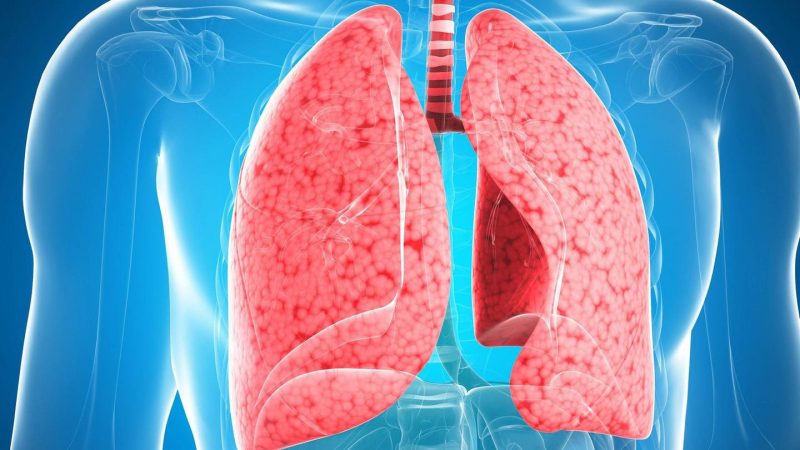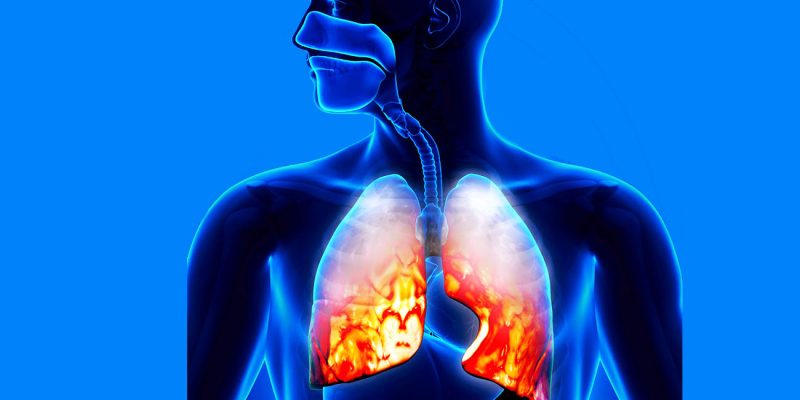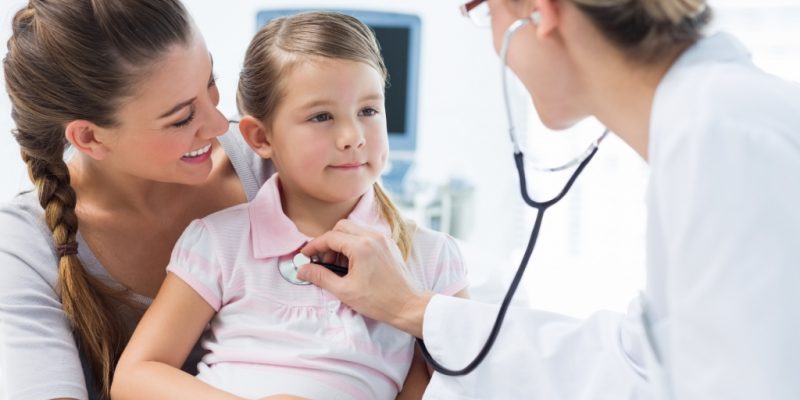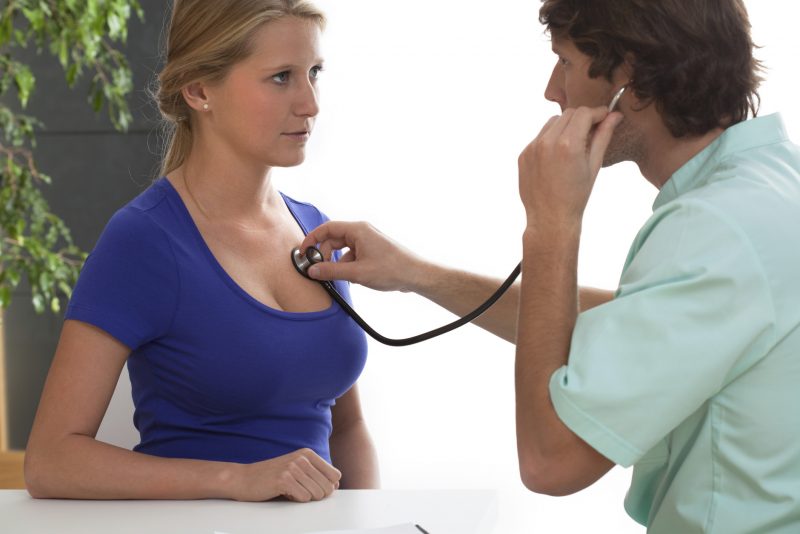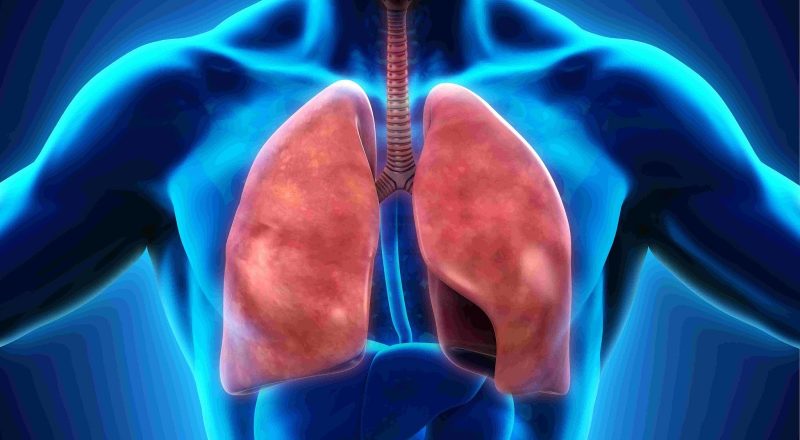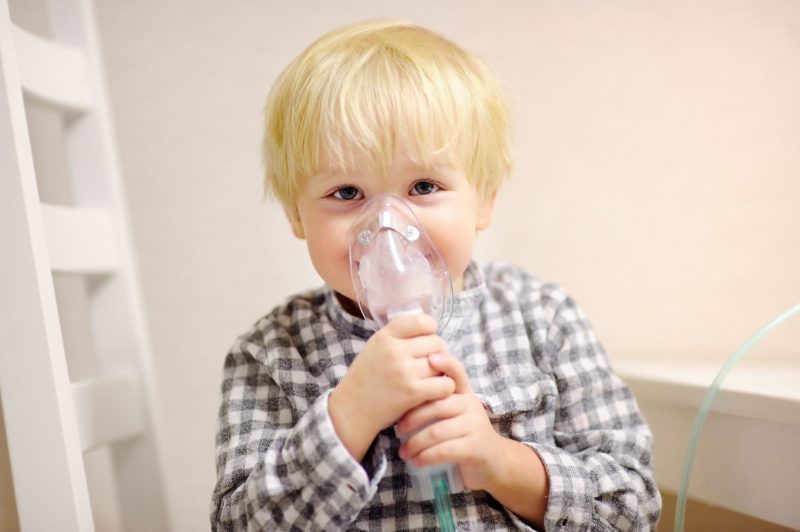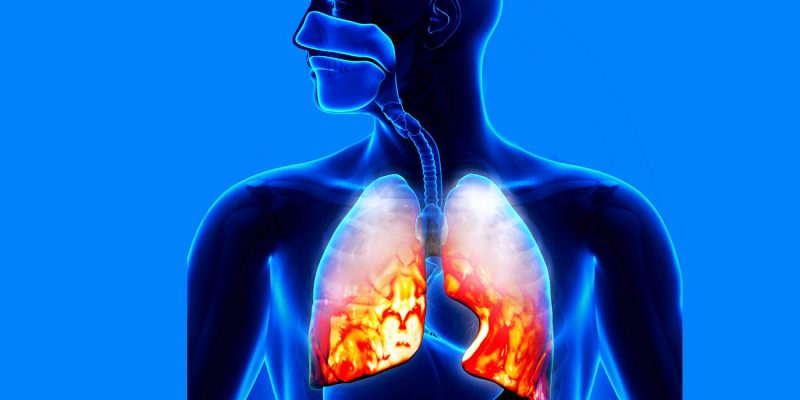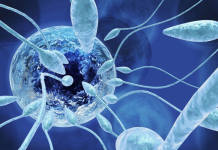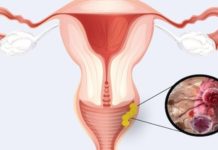Bilateral pneumonia is a severe disease that causes damage to both lungs. The disease is dangerous because with untimely and incorrect treatment it can provoke the occurrence of numerous complications, and in extreme cases - lead to the death of the patient. Both adults and children are exposed to it. Why the disease occurs, by what symptoms it can be recognized, what is needed for making a diagnosis and whether it is possible to solve the problem yourself - useful information in our article.
Material Content:
Brief description and causes of the disease
Bilateral pneumonia is an inflammatory disease of the lung caused by exposure to bacteria, viruses, or fungi. It is characterized by severe course. Damage to organ tissues can be either focal or total. Pathology leads to impaired respiratory function, which negatively affects the condition of the whole organism.
Most often, bilateral pneumonia in adults occurs for the following reasons:
- congenital pathologies of the lungs, due to which their functioning is incomplete;
- low immunity and any immunodeficiency states;
- chronic diseases of the lungs and bronchi;
- bad habits such as smoking and drinking alcohol;
- lack of exercise, a sedentary lifestyle, as a result of which oxygen metabolism in the tissues of an organ worsens, which leads to the occurrence of stagnation
- the presence of allergies;
- not completely treated “colds”.
Bilateral pneumonia in a child most often occurs due to weakened immunity and contact with the pathogen.
It is important to remember that in children the respiratory system is not fully developed, breathing is carried out according to the abdominal type. All these factors are predisposing to the development of the disease.
In newborn babies, the disease can occur in case of prematurity, as well as if the mother was ill with it during pregnancy.
Symptoms of bilateral pneumonia in adults and children
The manifestation of the disease is slightly different in adults and children.
For babies, the following symptoms of the disease are characteristic:
- The child becomes lethargic and sleepy, begins to sweat heavily.
- The baby's temperature rises to high marks, he may complain of a feeling of aching joints. Very young children become moody, constantly cry.
- A strong cough is noted, breathing is difficult, wheezing is heard. The child may be tormented by tearing and severe runny nose.
- There is severe intoxication, in children there are both vomiting and constant spitting up.
Adult patients complain of the following symptoms:
- Body temperature rises sharply to high values, chills, fever are observed.
- Patients are tormented by a cough, it can be either dry or with a discharge of viscous sputum.
- Patients complain of loss of strength, severe sweating at night, constant shortness of breath.
- In places of damage to the lungs, pain often occurs.
If an adult has noticed such symptoms in himself or his child, you should immediately consult a doctor to undergo an examination and prescribe the necessary treatment. Inflammation of the lungs in the absence of therapy can quickly lead to a critical deterioration in the condition and even death.
Diagnostic measures
The most accurate method for determining the inflammatory process in the lungs is a fluorogram. In the picture, the doctor will see the places of blackout in the lungs and will be able to make a preliminary diagnosis. It is also necessary to take urine and blood tests. According to the results of these studies, it will be clear how severe the inflammatory process is in the body.
In some cases, to clarify the diagnosis, you need to do a computed tomography of the lungs. Thanks to such a study, the doctor can see in detail what processes occur in the organ.
After a preliminary diagnosis is made, the patient needs to pass sputum for bacterial culture. This will identify the pathogen and select the necessary drugs.
Duration and treatment of pneumonia
The duration of treatment of the disease will depend on its stage, age of the patient and the type of infection that triggered the occurrence of the pathology. As a rule, patients have to spend at least 21 days in the hospital, since treatment should be carried out under the supervision of doctors.
They treat the disease as follows:
- Prescribe antibiotics and expectorant drugs. These drugs will fight the causative agent of the disease, while alleviating the patient's condition. Little by little the suffocating cough, wheezing, night sweats and fever will begin to go away. If the heat does not go away, the patient may be given antipyretic drugs. Along with antibiotics, antihistamines are prescribed.
- In addition, droppers with saline and vitamins are prescribed to relieve intoxication. Patients often drink and eat little, a weakened body needs support, and he receives it in the form of droppers.
- After the patient’s condition has stabilized, the time comes for physiotherapeutic procedures and massage, which are aimed at restoring respiratory function, improving oxygen metabolism and preventing the occurrence of congestion in the body.
- When the patient feels better, it is extremely important to provide him with high-calorie nutrition and plenty of drink.These measures are aimed at supporting and strengthening the body's defenses in the fight against infection.
It is important to remember that such a disease should be treated exclusively in a hospital under the supervision of a therapist and pulmonologist.
Self-medication will not only not bring a result, but will also delay the time for seeking qualified help. All this can lead to an increase in the period of therapy and an aggravation of the general condition.
Disease complications
Untreated disease leads to the occurrence of numerous lesions of lung tissue, such as an abscess, gangrene. Obstructive syndrome occurs, acute respiratory failure, pleurisy. Patients often experience damage to the heart muscle, for example, inflammatory processes in the tissues of the organ, the occurrence of acute failure. In severe cases, pneumonia can cause meningitis and toxic shock.
The consequences of the disease are sometimes much harder to cure than pneumonia itself.
Therefore, it is necessary not only to seek medical help in a timely manner, but also to strictly comply with all the instructions of the attending physician.
Rehabilitation period
After treatment, patients need rehabilitation. It will help restore the full functioning of the affected organ and the entire body.
The following activities are generally considered mandatory:
- Inhalation using essential oils and tinctures of medicinal herbs. Such an effect cleans the respiratory tract, has a disinfecting and antibacterial effect, allows to remove toxins and residues of sputum from the lungs.
- Physiotherapy exercises and massage. Both measures are aimed at restoring the normal functioning of the body and improving its oxygen saturation. Exercise therapy is a mix of gymnastics and breathing exercises. Massage is aimed at eliminating congestion in the lungs. Both procedures must be performed and supervised by specialists.
- Compliance with the diet. After suffering a disease, the patient needs to drink as much fluid as possible and consume foods rich in vitamins and minerals. Surely dairy products, low-fat meats, seasonal fruits and vegetables, cereals should be included in the diet. You should abandon the use of unhealthy food, as it will harm a weakened body.
- Recovery of intestinal microflora. Since the patient had to undergo prolonged antibiotic treatment to fight against pathogens, his intestinal microflora was severely affected. To normalize it, you may need to take special medications, as well as nutrition correction in the direction of increasing the number of fermented milk drinks in it.
- If the disease was particularly severe and led to the development of complications, the patient may require spa treatment. It is aimed at restoring the functions of the affected organ and strengthening the body.
Rehabilitation measures are no less important than the treatment itself, since they help the body recover and cope with the consequences of the inflammatory process in the lung tissues.
Prevention of bilateral pneumonia
To reduce the risk of bilateral pneumonia, you must adhere to the following preventive measures:
- Treat all emerging inflammatory infectious diseases immediately. Parents of babies and pregnant women should be especially strict about this. You do not need to try to transfer the disease "on your feet", as there is a high risk of complications.
- Lead a healthy lifestyle: walk more in the fresh air, give up bad habits, balance your diet.
- Try to reduce the level of stress, if necessary, seek the advice of a specialist.
- Do not contact with patients, during outbreaks of infectious diseases, strengthen immunity with the help of medicines and folk recipes.
These measures are very likely to help prevent the development of the disease.
Bilateral pneumonia in adults and children is a serious illness that, although treatable, often causes numerous complications. It is important not only to diagnose it at an early stage, but also to fully comply with all the instructions of the attending physician.


